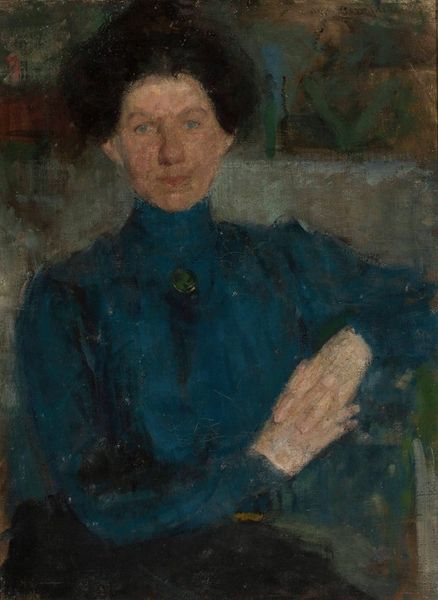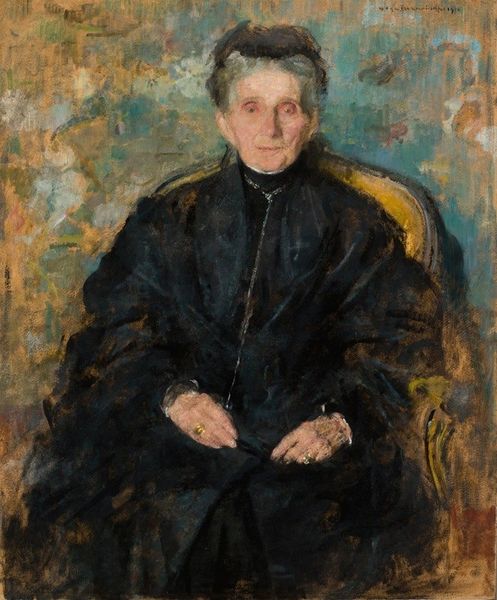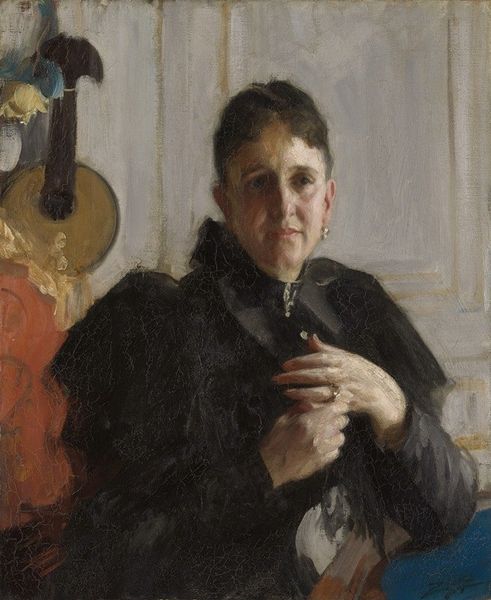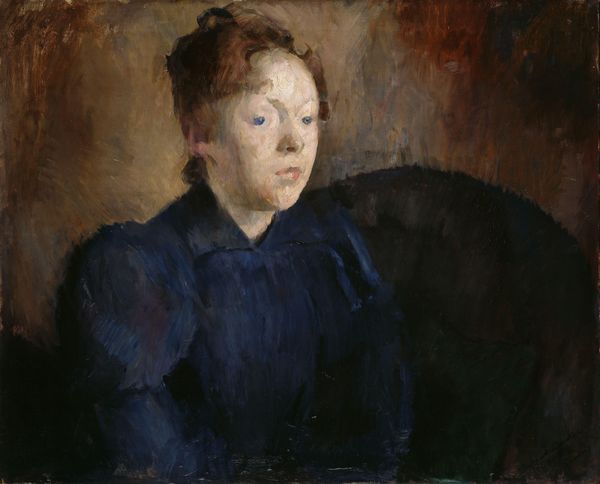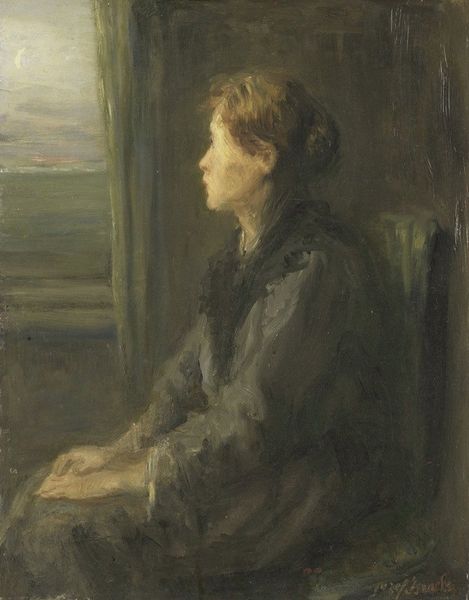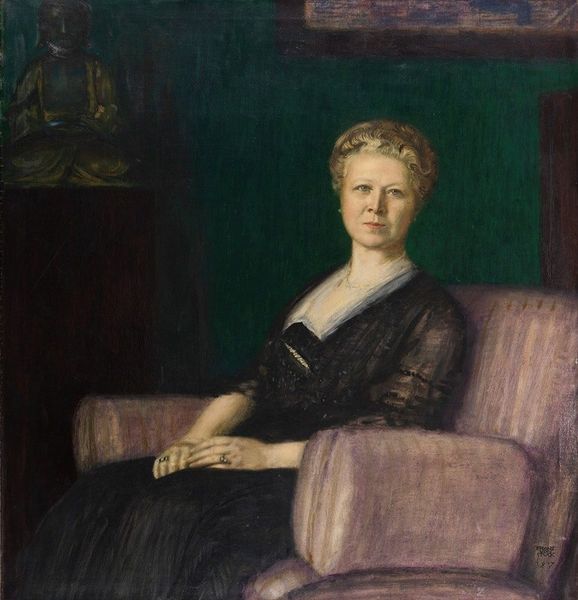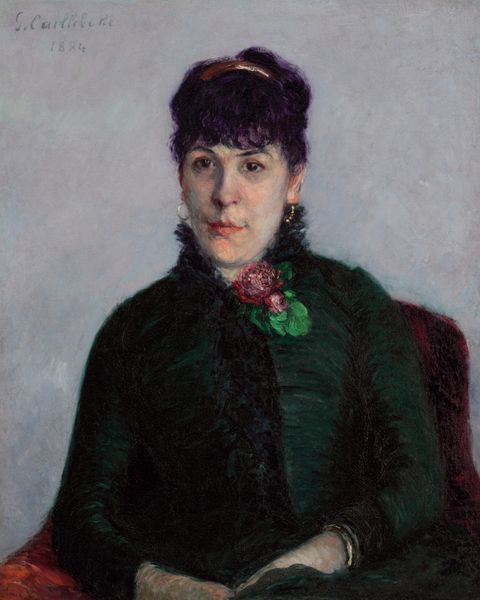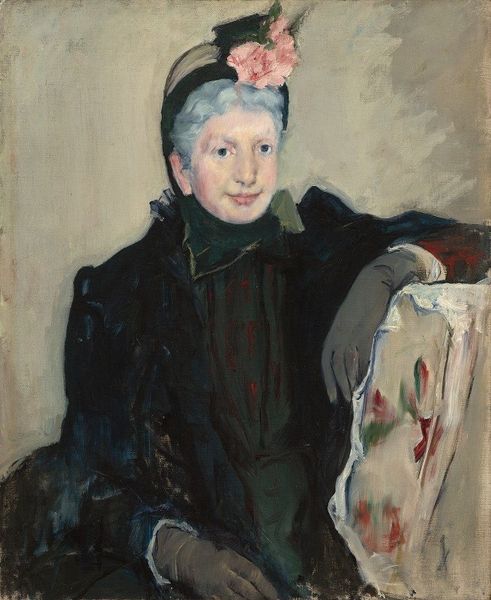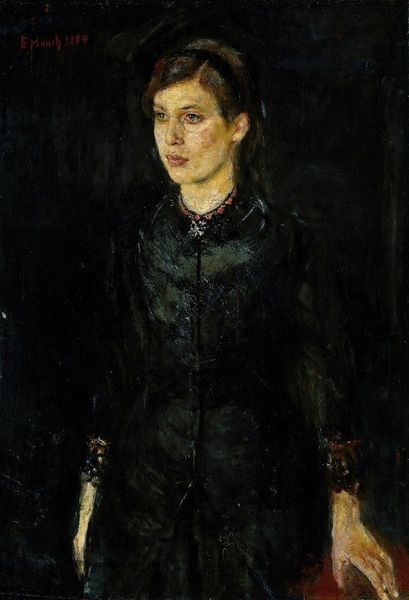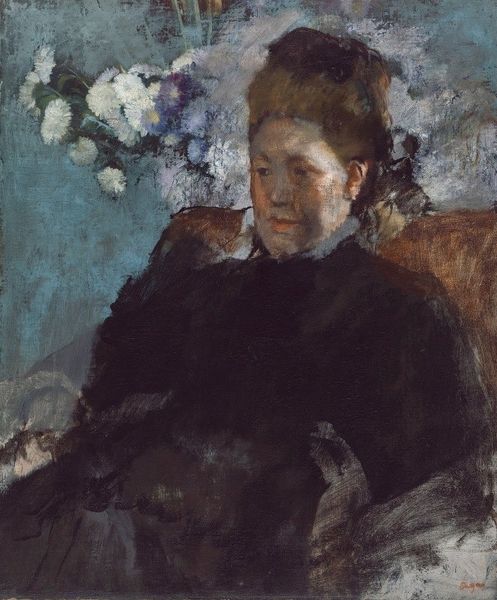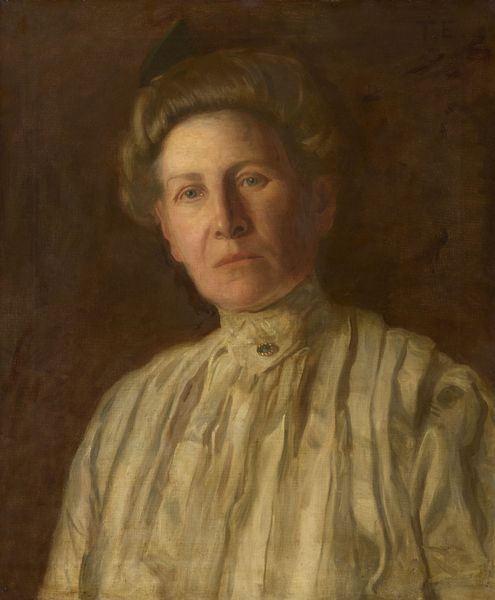
Copyright: Public domain
Curator: Let's discuss Harriet Backer's "Mrs. Vedastine Aubert," painted around 1910. Editor: Immediately, I'm struck by the color palette: a dominant blue for the sitter's blouse against that bold, unapologetic green backdrop. There's an honesty and lack of pretense in the rendering that feels profoundly modern, but perhaps melancholic? Curator: Backer, though often overlooked, was critical to introducing modernism to Norway. Her works consistently engaged with societal shifts—depicting interiority in the face of modernization. Consider Mrs. Aubert; she isn’t presented as ornament, but as a contemplative individual in a period of dramatic social transformation. Her gaze is knowing, reflecting a consciousness that transcends the domestic sphere. Editor: That crucifix, quite prominent against the blouse, suggests more than personal faith. It acts as an anchor, connecting her to a past as the world transforms, literally hanging as a reminder that value exists despite of modernity. She is physically central but rendered vulnerable by light. Note also how her hands, rather than holding a typical item or engaging in work, rest gently with a barely perceptible object nestled within them. Does it mean she is open and receiving? Curator: Backer’s Impressionist influences – the quick, loose brushstrokes – paradoxically contribute to a sense of permanence rather than fleetingness, don't you think? It gives presence to the individual. In this context, we are offered the question about visibility, class and gender that shape women's identity in Norway at this time, specifically concerning class and intellectual work. Editor: Interesting, and those visual elements become more powerful with that perspective, thank you. I now understand the quiet power held by this seemingly understated woman. Curator: It's rewarding when an artwork that might initially appear conventional reveals its depth with some additional layers of thought. Editor: I agree. It reinforces the notion that portraits contain untold stories, quietly waiting for someone to interpret them and that no element is a decoration, everything adds up to give the audience the true meaning of a face, even without words.
Comments
No comments
Be the first to comment and join the conversation on the ultimate creative platform.
